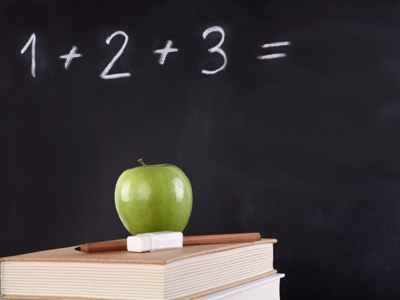
Ask the AI Tutor
Need help with Year 2 Calculation - Addition? Ask our AI Tutor!
AI Tutor - Lucy
Connecting with Tutor...
Please wait while we establish connection

1 + 2 + 3 gives the answer 6. So does 3 + 2 + 1. It doesn't matter what order you add the numbers in, you still get the same answer.
Year 2 Calculation - Addition
Practise adding two numbers. Count on, use number lines, and spot friendly tens to make sums quicker. Try simple steps that build confidence before bigger challenges.
Question 1
What is 10 + 9 + 10?
11
39
19
29
Adding the 10 and 10 up first, then adding the 9 might have helped
Question 2
What is the sum of 27 and 43?
70
80
60
56
Using the number bond of 7 and 3 might be useful
Question 3
What is 30 and 48 added together?
87
78
76
68
Adding the 30 and 40 first and then adding on the units is a good strategy here
Question 4
What is 23 + 45?
75
68
65
57
Partitioning means splitting up the tens and units, making this addition easier
Question 5
What is the total of 7 and 26?
34
43
23
33
Starting with the larger number and counting on might be a good plan
Question 6
What is the total of 2, 15 and 3?
20
19
25
15
Additions can be done in any order - putting the 15 first could be useful
Question 7
What is 8 + 9 + 7?
26
25
23
24
Trying to make 10 and then counting on, or using a near double of 7 + 7 could have helped
Question 8
When adding numbers together...
you should always put the largest number first
you should always put the smallest number first
you should guess the answer
you can add them in any order
Addition calculations can be done in any order, but subtractions cannot
Question 9
What is 3 + 9 + 4?
16
15
21
19
Adding up in any order will give the same answer
Question 10
What is 10 + 27 + 10?
45
37
47
54
Starting with 27 and counting up in tens is a good option to try
**Unlimited Quizzes Await You! 🚀**
Hey there, quiz champ! 🌟 You've already tackled today's free questions.
Ready for more?
Ready for more?
🔓 Unlock UNLIMITED Quizzes and challenge yourself every day. But that's
not all...
not all...
🔥 As a Subscriber you can join our thrilling "Daily Streak" against other
quizzers. Try to win a coveted spot on our Hall of Fame Page.
quizzers. Try to win a coveted spot on our Hall of Fame Page.
Don't miss out! Join us now and keep the fun rolling. 🎉
**Unlimited Quizzes Await You! 🚀**
Hey there, quiz champ! 🌟 You've already tackled today's free questions. Ready for more?
🔓 Unlock UNLIMITED Quizzes and challenge yourself every day. But that's not all...
🔥 As a Subscriber you can join our thrilling "Daily Streak" against other quizzers. Try to win a coveted spot on our Hall of Fame Page.
Don't miss out! Join us now and keep the fun rolling. 🎉






